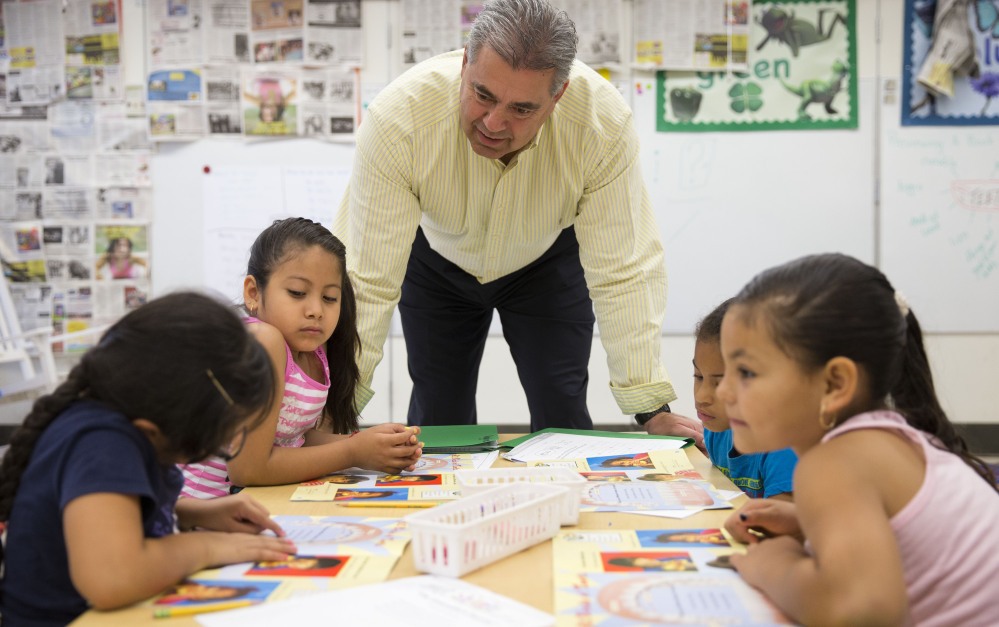KENNETT SQUARE, Pa. — The cheerful sign outside Jane Cornell’s summer school classroom in Pennsylvania’s wealthiest county reads “Welcome” and “Bienvenidos.”
Inside, giggling grade-schoolers who mostly come from homes where Spanish is the primary language worked on storytelling with a tale about a crocodile going to the dentist. This poster and classroom at the Mary D. Lang Kindergarten Center are a subtle representation of America’s changing school demographics.
For the first time, U.S. public schools are projected to have more minority students than non-Hispanic whites, a shift largely fueled by growth in the number of Hispanic children.
Non-Hispanic white students are still expected to be the largest racial group in the public schools this year at 49.8 percent. But according to the National Center for Education Statistics, minority students, when added together, will now make up the majority.
One-quarter of the minority students are Hispanic, 15 percent are black and 5 percent are Asian and Pacific Islanders. Biracial students and Native Americans make up a smaller share.
The shift brings new academic realities, such as the need for more English language instruction, and cultural ones, such as changing school lunch menus.
But it also brings up complex societal questions that often fall to school systems to address, including issues of immigration, poverty, diversity and inequity.
The result can be racial tension.
In Louisiana in July, Jefferson Parish public school administrators reached an agreement with Washington to end an investigation into discrimination against English language learners. In May, police helped break up a fight between Hispanic and black students in at a school in Streamwood, Illinois.
Issues of race and ethnicity in schools also can be more subtle.
In Pennsylvania’s Kennett Consolidated School District, Superintendent Barry Tomasetti said “We like our diversity,” even as he acknowledged the cost. He has had to hire English language instructors and translators for parent-teacher conferences. He has cobbled money together to provide summer school for many young English language learners.
The new majority-minority status of schools mirrors a change that is coming for the nation as a whole. The Census Bureau estimates that the country’s population also will have more minorities than whites for the first time in 2043, a result of higher birth rates among Hispanics and a stagnating or declining birth rate among blacks, whites and Asians.
As the school age population has become more nonwhite, it’s also become poorer, said Patricia Gandara, co-director of the Civil Rights Project at UCLA.
One-quarter of Hispanics and African-Americans live below the poverty line and some of the poorest of Hispanic children are dealing with the instability of being in the country illegally or with a parent who is, Gandara said.
Focusing on teacher prep and stronger curriculum is “not going to get us anywhere unless we pay attention to the really basic needs of these children, things like nutrition and health and safety, and the instability of the homes,” she said.
Send questions/comments to the editors.



Success. Please wait for the page to reload. If the page does not reload within 5 seconds, please refresh the page.
Enter your email and password to access comments.
Hi, to comment on stories you must . This profile is in addition to your subscription and website login.
Already have a commenting profile? .
Invalid username/password.
Please check your email to confirm and complete your registration.
Only subscribers are eligible to post comments. Please subscribe or login first for digital access. Here’s why.
Use the form below to reset your password. When you've submitted your account email, we will send an email with a reset code.